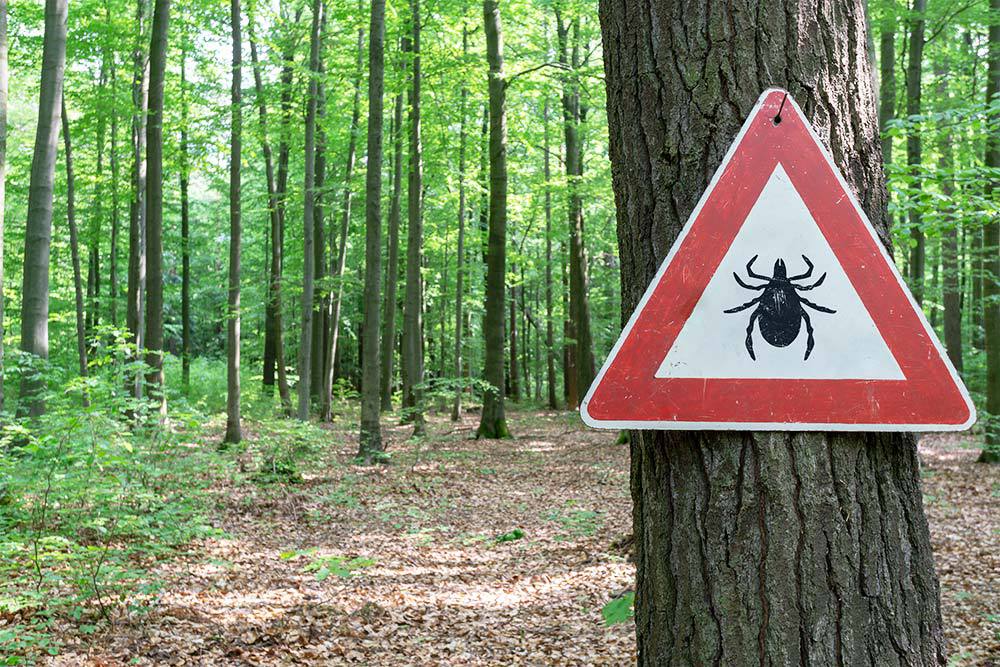Spotting and Treating Tick Bites On Children

It’s tick season! Keep your kiddos safe by knowing how to identify a bite, ways to treat it, and when to call the doctor.
Medical Expert: Rajitha Julapalli, MD
No one—whether a baby, child, or adult—enjoys falling victim to any bug’s bite. They can hurt, itch, cause bleeding, and some take a surprising amount of time to heal. Still, as irritating as they may be, most insects are relatively harmless. Some tick bites, however, have the potential to progress into serious complications if they are not addressed quickly.
What Does a Tick Bite Look Like on a Child?
In most cases, if your child has been bitten by a tick, the insect will still be attached to their skin, as ticks don’t tend to fall off on their own for three to six days. You’d think that this would make identifying a bite relatively easy, but ticks vary in size, from as small as a poppy seed or pinhead to the size of an apple seed, according to the American Academy of Pediatrics (AAP), which can make things tricky.
“How tick bites look on children can vary,” says Rajitha Julapalli, MD, a board-certified pediatrician at Pediatrix Urgent Care of Texas, “The tick itself may or may not be visible, or you may be able to see a small black dot, a small red bump, or a larger reaction.”
If the tick has fallen off, the bite will likely resemble a mosquito bite—and may even itch a bit—and go away on its own within a few days. If the tick is still attached, you will see the black bug on the skin; but keep in mind that as ticks feed, they grow up to three times their original size, so it could be as small as a pinhead or much larger (and more obvious). In some cases, the bite will cause a reaction that should prompt further attention.
“Parents should look out for any expanding redness [at the site] or bullseye rash, which can be signs of a skin infection or a tickborne illness like Lyme disease,” says Dr. Julapalli.
What Are Tickborne Diseases?
There are seven species of ticks that are commonly found in the U.S., though each one is localized to certain regions throughout the country. Every species has the ability to transmit diseases, such as Lyme disease, Rocky Mountain spotted fever, bourbon virus, Colorado tick fever, or Powassan virus, among others, though specific disease(s) vary by species.
Lyme disease is most common in the Northeast from Virginia to Maine, north-central states, and the west coast, and Rocky Mountain spotted fever is most common in North Carolina, Tennessee, Missouri, Arkansas, and Oklahoma.
While any tickborne illness can come with some pretty unpleasant symptoms, the AAP particularly warns caregivers about Lyme disease and Rocky Mountain spotted fever, as these can have lasting effects if not properly treated. Thankfully, even though these illnesses are serious, they’re also uncommon. The AAP says even in areas with the highest chance of Lyme disease, there is only around a 2% risk of a person developing it.
When and Where Do Ticks Commonly Bite?
According to the Centers for Disease Control and Prevention (CDC), ticks are most active in the United States during warmer months—typically from April through October. Regardless of the species, Dr. Julapalli says ticks like to live in warm and moist areas They’re commonly found in grassy, brushy, or wooded environments, so if you and your kiddos are spending time outdoors, it’s important to do a quick scan when you come inside to ensure no one has a tick bite.
“A thorough full-body check should be performed after going outside, into wooded areas or where ticks are more prevalent,” stresses Dr. Julapalli. “In children, pay particularly close attention to the head and neck area, upper back, waist/buttocks, and behind the knees and legs.”
How to Prevent Tick Bites
The good news? Protecting your child(ren) against tick bites is relatively easy.
“Wearing long sleeves and long pants that can be tucked into socks as well as closed-toed shoes are recommended,” Dr. Julapalli explains, adding, “You can also use a bug spray with DEET.” (Be sure to check with your child’s pediatrician before using insect repellant with harsh chemicals or consider using a natural alternative).
Additionally, after you come inside, the CDC recommends checking your child’s (and your own) clothing for ticks—removing them if found—and then tossing them into the dryer on high heat for 10 minutes to kill any remaining ticks that may have gone undetected. If the clothes are damp, you’ll likely need to tumble them for a little longer, and if they need to be washed first, do so using hot water, as mild and cold water will not kill ticks. Similarly, it’s a good idea to help your child take a hot shower or bath to wash off any unattached ticks (plus, you can do a quick and easy fully body tick check while you’re at it).
What To Do If Your Child Has a Tick Bite
In the event your child has been bitten by a tick, Dr. Julapalli recommends quickly snapping a picture of the bite and the bug in order to help identify the species and track any skin changes or reactions should you need to take your child to the doctor. If the bug isn’t attached, you should still take a photo of the bite, but assuming there are no other worrying symptoms, wash the bite and then monitor it to ensure it heals.
If the tick is still attached, take a deep breath—because it will need to be removed (gross, I know). If you feel comfortable removing the tick on your own, Dr. Julapalli suggests doing so because the sooner it can be removed, the better. However, if you need to wait for a doctor or someone else do the removal, don’t panic;according to the AAP, as long as the tick is removed within 36 hours of the bite, the risk of your child developing a tickborne illness is low.
The AAP offers the following guidance for removing the common wood tick or deer tick:
For a wood tick:
- With tweezers held sideways, grab the tick on its head as close to the skin as possible (without pinching your child).
- Once you have a good grip on the tick, gently pull straight upward (avoiding twisting or crushing the tick).
- Keep gently pulling until the tick releases its grip.
Note: if you don’t have tweezers, you can use your fingers and follow the same steps—just make sure to remove it from yourself if it attaches to you.
If the tick’s head stays attached under your child’s skin during the removal process …
- Using clean tweezers (or fingers), remove as many large parts as possible.
- Once all of the large parts are removed, clean the area with rubbing alcohol.
- Use tweezers or a needle to uncover the head and scrape it off.
For a deer tick:
- If the tick is swollen, try to remove it with tweezers.
- If it is tiny, it needs to be scraped off using the edge of a credit card (or similar).
- Once removed, wash the wound and your hands with soap and water to prevent catching any diseases spread by the tick.
- Apply an antibiotic ointment to the bite.
If you are successful in removing the tick at home, Dr. Julapalli recommends contacting your pediatrician to discuss further care or if any antibiotics are necessary. She also says, “Parents should monitor for flu-like symptoms, such as fever, fatigue, headache, and or muscle or joint pain that develop within 30 days of the bite” and call the pediatrician immediately if symptoms occur.
Tick bites in children can be very scary, but as long as you are diligent about checking your child after outside play, it is unlikely that any complications will arise. If your child does get bitten, remember to stay calm, assess the situation, and call the doctor for next steps. These bites are usually harmless, and your child will be back to exploring the outdoors in no time.








